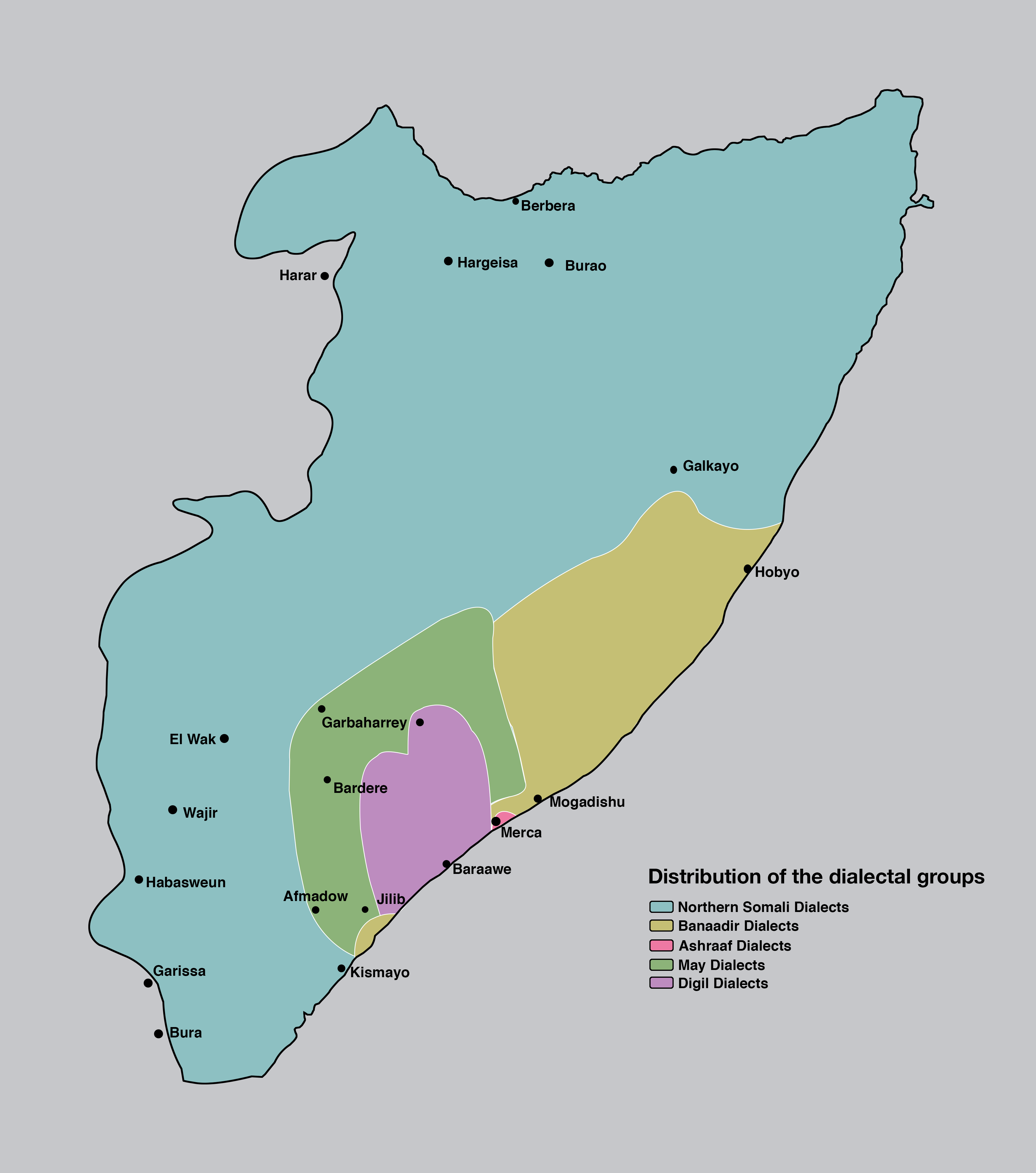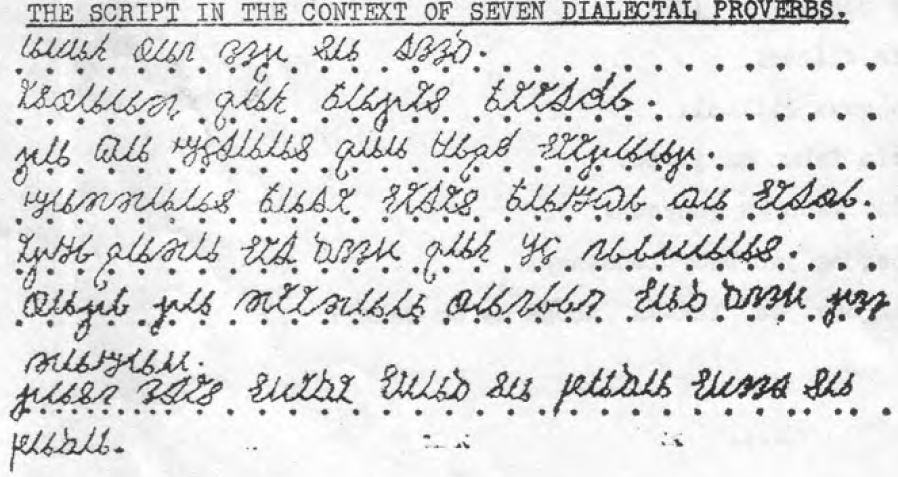|
Borama Script
The Gadabuursi script also known as the Borama alphabet (Borama: ), is a writing script for the Somali language. It was devised around 1933 by Sheikh Abdurahman Sh. Nur of the Gadabuursi clan. History Though not as widely known as Osmanya, the other major orthography for transcribing Somali, Borama has produced a notable body of literature mainly consisting of qasidas.I.M. Lewis (1958)The Gadabuursi Somali Script ''Bulletin of the School of Oriental and African Studies'', University of London, Vol. 21, pp. 134–156. A quite accurate phonetic writing system, the Borama script was principally used by Nuur and his circle of associates in his native city of Borama. See also * Kaddare *Osmanya *Somali orthography Notes References *I.M. Lewis (1958)The Gadabuursi Somali Script ''Bulletin of the School of Oriental and African Studies'', University of London The University of London (UoL; abbreviated as Lond or more rarely Londin in post-nominals) is a federal public rese ... [...More Info...] [...Related Items...] OR: [Wikipedia] [Google] [Baidu] |
Somali Language
Somali (Latin script: ; Wadaad: ; Osmanya: 𐒖𐒍 𐒈𐒝𐒑𐒛𐒐𐒘 ) is an Afroasiatic language belonging to the Cushitic branch. It is spoken as a mother tongue by Somalis in Greater Somalia and the Somali diaspora. Somali is an official language in Somalia and Ethiopia, and a national language in Djibouti as well as in northeastern Kenya. The Somali language is written officially with the Latin alphabet although the Arabic alphabet and several Somali scripts like Osmanya, Kaddare and the Borama script are informally used.Lewis, I.M. (1958)The Gadabuursi Somali Script ''Bulletin of the School of Oriental and African Studies'', University of London, Vol. 21, pp. 134–156. Classification Somali is classified within the Cushitic branch of the Afroasiatic family, specifically, Lowland East Cushitic in addition to Afar and Saho. Somali is the best-documented of the Cushitic languages, with academic studies of the language dating back to the late 19th century. ... [...More Info...] [...Related Items...] OR: [Wikipedia] [Google] [Baidu] |
Alphabet
An alphabet is a standardized set of basic written graphemes (called letters) that represent the phonemes of certain spoken languages. Not all writing systems represent language in this way; in a syllabary, each character represents a syllable, and logographic systems use characters to represent words, morphemes, or other semantic units. The first fully phonemic script, the Proto-Sinaitic script, later known as the Phoenician alphabet, is considered to be the first alphabet and is the ancestor of most modern alphabets, including Arabic, Cyrillic, Greek, Hebrew, Latin, and possibly Brahmic. It was created by Semitic-speaking workers and slaves in the Sinai Peninsula (as the Proto-Sinaitic script), by selecting a small number of hieroglyphs commonly seen in their Egyptian surroundings to describe the sounds, as opposed to the semantic values of the Canaanite languages. However, Peter T. Daniels distinguishes an abugida, a set of graphemes that represent cons ... [...More Info...] [...Related Items...] OR: [Wikipedia] [Google] [Baidu] |
Boorama
Borama ( so, Boorama, ar, بورما) is the Second capital city of Somaliland and the largest city of the northwestern Awdal region of Somaliland The commercial seat of the province, it is situated near the border with Ethiopia. During the Middle Ages, Borama was ruled by the Adal Sultanate. It later formed a part of the British Somaliland protectorate in the first half of the 20th century. According to the UNDP in 2014, the city had a population of around 398,609 making it one of the largest cities inside Somaliland. It has been a leading example in community organizing, having been the first area in Somaliland to adopt a self-help scheme in the wake of the civil war. History As with several nearby towns such as Amud, numerous archaeological finds have been discovered in the Borama area that point to an eventful past. The latter include ancient remains of tombs, houses and mosques, in addition to sherds of Oriental wares, particularly Chinese porcelain. The artefacts and s ... [...More Info...] [...Related Items...] OR: [Wikipedia] [Google] [Baidu] |
Writing System
A writing system is a method of visually representing verbal communication, based on a script and a set of rules regulating its use. While both writing and speech are useful in conveying messages, writing differs in also being a reliable form of information storage and transfer. Writing systems require shared understanding between writers and readers of the meaning behind the sets of characters that make up a script. Writing is usually recorded onto a durable medium, such as paper or electronic storage, although non-durable methods may also be used, such as writing on a computer display, on a blackboard, in sand, or by skywriting. Reading a text can be accomplished purely in the mind as an internal process, or expressed orally. Writing systems can be placed into broad categories such as alphabets, syllabaries, or logographies, although any particular system may have attributes of more than one category. In the alphabetic category, a standard set of letters represent ... [...More Info...] [...Related Items...] OR: [Wikipedia] [Google] [Baidu] |
Sheikh Abdurahman Sh
Sheikh (pronounced or ; ar, شيخ ' , mostly pronounced , plural ' )—also transliterated sheekh, sheyikh, shaykh, shayk, shekh, shaik and Shaikh, shak—is an honorific title in the Arabic language. It commonly designates a chief of a tribe or a royal family member in Arabian countries, in some countries it is also given to those of great knowledge in religious affairs as a surname by a prestige religious leader from a chain of Sufi scholars. It is also commonly used to refer to a Muslim religious scholar. It is also used as an honorary title by people claiming to be descended from Hasan ibn Ali and Husayn ibn Ali both patrilineal and matrilineal who are grandsons of the Islamic prophet Muhammad. The term is literally translated to " Elder" (is also translated to "Lord/Master" in a monarchical context). The word 'sheikh' is mentioned in the 23rd verse of Surah Al-Qasas in the Quran. Etymology and meaning The word in Arabic stems from a triliteral root connected with a ... [...More Info...] [...Related Items...] OR: [Wikipedia] [Google] [Baidu] |
Gadabuursi
The Gadabuursi ( Somali: ''Gadabuursi'', Arabic: جادابورسي), also known as ''Samaroon'' ( Arabic: ''قبيلة سَمَرُون)'', is a northern Somali clan, a sub-division of the Dir clan family. The Gadabuursi are geographically spread out across three countries: Ethiopia, Somaliland and Djibouti. Among all of the Gadabuursi inhabited regions of the Horn of Africa, Ethiopia is the country where the majority of the clan reside. In Ethiopia, the Gadabuursi are mainly found in the Somali Region, but they also inhabit the Harar, Dire Dawa and Oromia regions. In Somaliland, the Gadabuursi are the predominant clan of the Awdal Region.Samatar, Abdi I. (2001) "Somali Reconstruction and Local Initiative: Amoud University," , p. 132. They are mainly found in cities and towns such as Borama, Baki, Lughaya, Zeila, Dilla, Jarahorato, Amud, Abasa, Fiqi Aadan, Quljeed, Boon and Harirad and Wajale, Magalo ad. In Ethiopia, the Gadabuursi are the predominant clan o ... [...More Info...] [...Related Items...] OR: [Wikipedia] [Google] [Baidu] |
Osmanya Alphabet
The Osmanya script ( so, Farta Cismaanya 𐒍𐒖𐒇𐒂𐒖 𐒋𐒘𐒈𐒑𐒛𐒒𐒕𐒖), also known as Far Soomaali (𐒍𐒖𐒇 𐒘𐒝𐒈𐒑𐒛𐒘, "Somali writing") and, in Arabic, as ''al-kitābah al-ʿuthmānīyah'' (الكتابة العثمانية; "Osman writing"), is a writing script created to transcribe the Somali language. It was invented between 1920 and 1922 by Osman Yusuf Kenadid, the son of Sultan Yusuf Ali Kenadid and brother of Sultan Ali Yusuf Kenadid of the Sultanate of Hobyo. History While Osmanya gained reasonably wide acceptance in Somalia and quickly produced a considerable body of literature, it proved difficult to spread among the population mainly due to stiff competition from the long-established Arabic script as well as the emerging Somali Latin alphabet developed by a number of leading scholars of Somali, including Musa Haji Ismail Galal, B. W. Andrzejewski and Shire Jama Ahmed. As nationalist sentiments grew and since the ... [...More Info...] [...Related Items...] OR: [Wikipedia] [Google] [Baidu] |
Qasida
The qaṣīda (also spelled ''qaṣīdah''; is originally an Arabic word , plural ''qaṣā’id'', ; that was passed to some other languages such as fa, قصیده or , ''chakameh'', and tr, kaside) is an ancient Arabic word and form of writing poetry, often translated as ode, passed to other cultures after the Arab Muslim expansion. The word ''qasidah'' is still used in its original birthplace, Arabia, and in all Arab countries. Well known ''qasā'id'' include the Seven Mu'allaqat and Qasida Burda ("Poem of the Mantle") by Imam al-Busiri and Ibn Arabi's classic collection "The Interpreter of Desires". The classic form of qasida maintains a single elaborate metre throughout the poem, and every line rhymes on the same sound.Akiko Motoyoshi Sumi, ''Description in Classical Arabic Poetry: ''Waṣf'', Ekphrasis, and Interarts Theory'', Brill Studies in Middle Eastern literatures, 25 (Leiden: Brill, 2004), p. 1. It typically runs from fifteen to eighty lines, and sometimes mo ... [...More Info...] [...Related Items...] OR: [Wikipedia] [Google] [Baidu] |
University Of London
The University of London (UoL; abbreviated as Lond or more rarely Londin in post-nominals) is a federal public research university located in London, England, United Kingdom. The university was established by royal charter in 1836 as a degree-awarding examination board for students holding certificates from University College London and King's College London and "other such other Institutions, corporate or unincorporated, as shall be established for the purpose of Education, whether within the Metropolis or elsewhere within our United Kingdom". This fact allows it to be one of three institutions to claim the title of the third-oldest university in England, and moved to a federal structure in 1900. It is now incorporated by its fourth (1863) royal charter and governed by the University of London Act 2018. It was the first university in the United Kingdom to introduce examinations for women in 1869 and, a decade later, the first to admit women to degrees. In 1913, it appoi ... [...More Info...] [...Related Items...] OR: [Wikipedia] [Google] [Baidu] |
Kaddare Alphabet
The Kaddare alphabet is a writing script created to transcribe Somali, a Cushitic language in the Afroasiatic language family. History The orthography was invented in 1952 by a Sufi Sheikh, named Hussein Sheikh Ahmed Kaddare. A phonetically robust writing system, the technical commissions that appraised the Kaddare script concurred that it was a very accurate orthography for transcribing Somali. Form The Kaddare script uses both upper and lower case letters, with the lower case represented in cursive. Many characters are transcribed without having to lift the pen. Several of Kaddare's letters are similar to those in the Osmanya script, while others bear a resemblance to Brahmi. As there are no dedicated characters for long vowels, a vowel is made long by simply writing it twice. See also *Somali orthography *Borama *Osmanya The Osmanya script ( so, Farta Cismaanya 𐒍𐒖𐒇𐒂𐒖 𐒋𐒘𐒈𐒑𐒛𐒒𐒕𐒖), also known as Far Soomaali (𐒍𐒖𐒇 𐒘𐒝� ... [...More Info...] [...Related Items...] OR: [Wikipedia] [Google] [Baidu] |
Somali Orthography
A number of writing systems have been used to transcribe the Somali language. Of these, the Somali Latin alphabet is the most widely used. It has been the official writing script in Somalia since the Supreme Revolutionary Council formally introduced it in October 1972, and was disseminated through a nationwide rural literacy campaign. Prior to the twentieth century, the Arabic script was used for writing Somali. An extensive literary and administrative corpus exists in Arabic script. It was the main script historically used by the various Somali sultans to keep records. Writing systems developed locally in the twentieth century include the Osmanya, Borama and Kaddare scripts. Latin script The Somali Latin script, or Somali Latin alphabet, was developed by a number of leading scholars of Somali, including Musa Haji Ismail Galal, B. W. Andrzejewski and Shire Jama Ahmed specifically for transcribing the Somali language. It uses all letters of the English Latin alphabet except ... [...More Info...] [...Related Items...] OR: [Wikipedia] [Google] [Baidu] |










